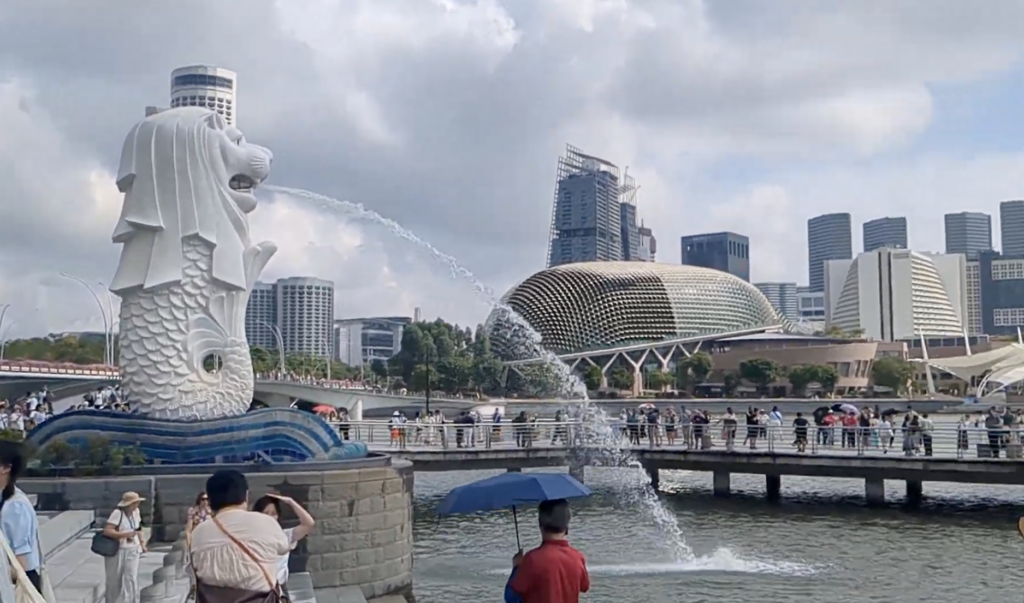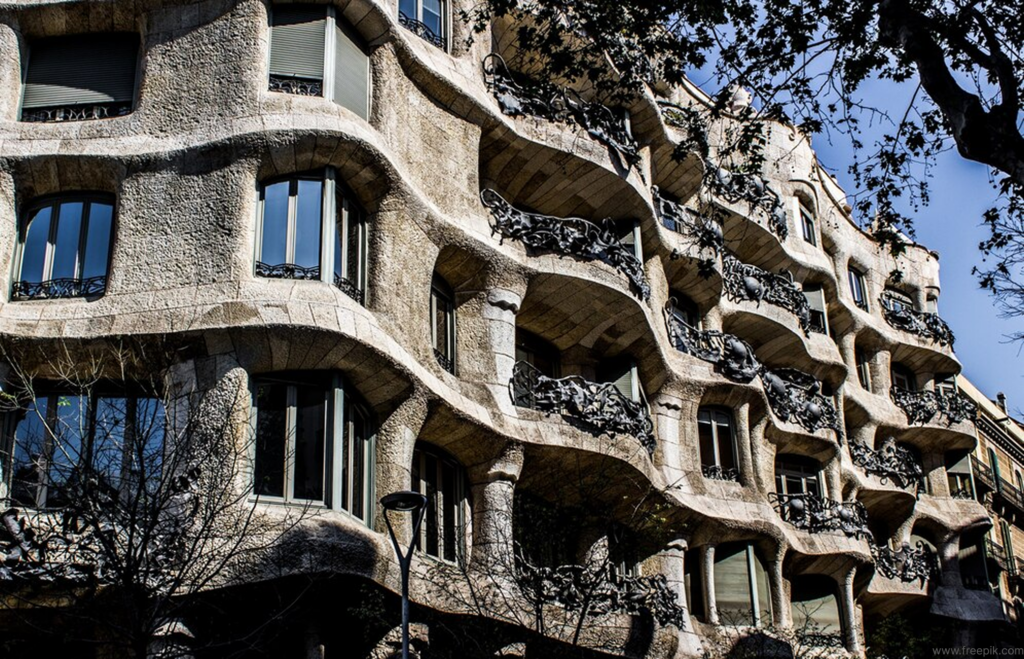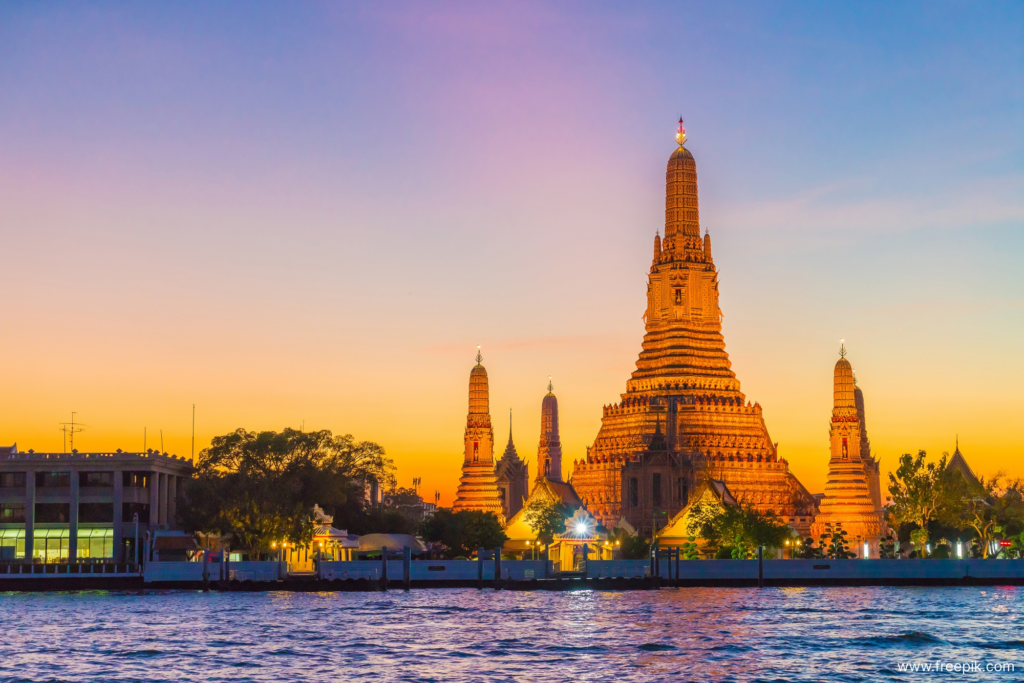Top 5 Attractions Every Tourist Should Visit in Singapore

When it comes to must-visit spots in Singapore, Marina Bay takes the crown! According to our analysis, this iconic destination welcomes 125% more tourists than Chinatown—a beloved area known for its rich oriental charm, traditional vibes, and cultural appeal. So, what makes Marina Bay such a magnet for visitors? Let’s dive in! Singapore, a city where cutting-edge innovation meets deep-rooted heritage, is packed with incredible sights for every kind of traveler. Whether you’re drawn to stunning cityscapes, lush gardens, or immersive cultural experiences, this dynamic city has something for you. Here are the top 5 attractions that deserve a spot on your itinerary! 1. Marina Bay Sands One of the most iconic landmarks in Singapore, Marina Bay Sands is a must-visit for anyone traveling to the city. This luxurious resort complex boasts a spectacular integrated design that includes a casino, high-end shopping mall, observation deck, and one of the most stunning infinity pools in the world. The SkyPark, located on the 57th floor, offers panoramic views of Singapore’s skyline, the Gardens by the Bay, and the South China Sea. In the evening, the Marina Bay Sands Light and Water Show provides a dazzling display of lights, water, and sound that perfectly encapsulates the city’s futuristic charm. For those interested in shopping and dining, the Marina Bay Sands Shoppes offers a vast array of luxury stores and fine dining options, making it a great place to indulge. 2. Gardens by the Bay Another signature attraction in Singapore, Gardens by the Bay, is a futuristic garden space that showcases the city’s commitment to green spaces. This 101-hectare park is located right by Marina Bay and features a stunning collection of plants from around the world, set against the backdrop of Singapore’s modern skyline. The Supertree Grove, with its towering tree-like structures, is one of the most recognizable features of the park. These vertical gardens are not only beautiful but also function as environmentally sustainable systems, collecting solar energy and rainwater. Visitors can also explore the Cloud Forest and Flower Dome, both of which house a range of exotic plant species in carefully controlled climates. Don’t miss the evening OCBC Skyway walk, where you can get an elevated view of the Supertree Grove, especially when the trees light up at night in a stunning light show. 3. Sentosa Island Known as Singapore’s island resort, Sentosa is the ultimate destination for fun and relaxation. Whether you’re looking to unwind at the beach or enjoy a thrilling day with family and friends, Sentosa has it all. It’s home to some of the most popular attractions in Singapore, including Universal Studios Singapore, S.E.A. Aquarium, and Adventure Cove Waterpark. For those looking for a unique experience, visit the Wings of Time show, a mesmerizing water, laser, and fire display that takes place at night on the beach. Additionally, Sentosa’s beaches, such as Palawan Beach and Siloso Beach, offer a relaxing retreat, with options for beach sports, sunbathing, or enjoying a leisurely walk along the coast. 4. Singapore Zoo and Night Safari Singapore is famous for its world-class zoos and wildlife parks, and Singapore Zoo is among the best in the world. Set within a lush rainforest environment, the zoo is home to over 2,800 animals, many of which are rare or endangered species. It features open-air exhibits that mimic the animals’ natural habitats, allowing visitors to get a close-up view of the wildlife in a more immersive and ethical way. For an even more unique experience, don’t miss the Night Safari, the world’s first nocturnal zoo. Visitors can embark on a tram ride through the park, where they’ll encounter over 130 species of animals, many of them active only during the night. This fascinating experience offers a different perspective of wildlife and is especially popular for families and animal lovers. 5. Chinatown and Little India For those interested in Singapore’s cultural history, a visit to Chinatown and Little India offers a glimpse into the city’s multicultural roots. Chinatown is bustling with energy, from the historic temples to the colorful street markets. Visitors can explore the Buddha Tooth Relic Temple, which houses a sacred relic of the Buddha, or shop for souvenirs and authentic Chinese products at the Chinatown Street Market. For foodies, Chinatown Complex Food Centre offers some of the best local dishes like Hainanese chicken rice and laksa. On the other hand, Little India provides an entirely different cultural experience. With its vibrant colors, intricate temples, and lively markets, Little India is a great place to explore Singapore’s Indian heritage. Don’t miss the Sri Veeramakaliamman Temple, one of the oldest Hindu temples in Singapore, or the bustling Tekka Centre, where you can savor authentic Indian cuisine and shop for textiles, spices, and more. Conclusion From futuristic gardens to cultural districts and exciting wildlife encounters, Singapore offers a diverse array of attractions that appeal to every type of traveler. Whether you’re looking to explore the city’s natural beauty, indulge in luxury experiences, or learn about its rich history, Singapore’s top attractions promise to leave a lasting impression. These five destinations are just the tip of the iceberg, but they provide a perfect starting point for anyone seeking to discover the best of this remarkable city-state.
Exploring the Growing Presence of Asian Tourists in Barcelona

Barcelona, one of Europe’s most visited cities, is renowned for its vibrant culture, stunning architecture, and Mediterranean charm. Over the years, the city has attracted millions of visitors from all corners of the globe. Among these tourists, an increasingly significant demographic is coming from Asia. Today, around 4% of the tourists in Barcelona are from Asia, with China representing a notable portion of this group. The Rise of Asian Tourism in Barcelona In recent years, Asian tourists have become a growing presence in Barcelona’s tourism landscape. The allure of the city’s iconic attractions, such as the Sagrada Familia, Park Güell, and the beaches along the Mediterranean coast, has drawn an increasing number of visitors from the East. As travel connectivity between Europe and Asia has improved, more Asians are exploring Barcelona as part of their European itinerary. What’s particularly striking is the concentration of visitors from China. Roughly half of the Asian tourists—around 2% of all visitors to the city—are from China. This figure highlights not only the importance of China as a source market but also the changing nature of global tourism. In the past, European destinations were often more popular among American and European travelers. However, with the rise of the Chinese middle class, Asian tourists are becoming a key driver of Barcelona’s tourism industry today. Why Barcelona? The Appeal for Chinese Tourists Why is Barcelona becoming an increasingly popular destination for Chinese tourists? Several factors contribute to this trend. ◾️ Cultural Richness: Chinese tourists are attracted to Barcelona’s rich history and cultural offerings. The works of Antoni Gaudí, in particular, resonate with travelers keen to experience unique and artistic expressions that stand out globally. The famous Sagrada Familia cathedral is also a notable place to visit. It is often featured as a top attraction for visitors from China, who are drawn to its intricate design and cultural significance. ◾️ Shopping and Luxury Goods: Barcelona has a reputation as a shopping hub, with its luxury boutiques and renowned shopping streets like Passeig de Gràcia. Chinese tourists, who are known for their love of high-end shopping, often seek European fashion and brands that are not easily available in their home country. ◾️ Gastronomy: Spanish cuisine, particularly tapas and seafood, is another key attraction for Chinese visitors. The growing interest in international cuisines has sparked curiosity among Chinese travelers. It drives travelers’ desires to experience Spain’s culinary delights, making Barcelona a prime destination. ◾️ Social Media and Celebrity Influence: China’s large digital ecosystem, including platforms like WeChat and Weibo, has played a pivotal role in shaping travel trends. Many Chinese tourists are influenced by social media, where Barcelona’s picturesque scenery and its vibrant lifestyle are widely promoted. As a result, Barcelona has become a must-visit destination for Chinese travelers seeking to share their travel experiences. The Economic Impact of Asian Tourism The growing number of Asian tourists, especially from China, is enriching Barcelona’s cultural diversity and driving substantial economic growth. Chinese visitors, known for their high spending power, often outspend other tourists, particularly on luxury goods, fine dining, and guided tours. Their presence is reshaping the city’s tourism landscape. To cater to this demand, businesses in hospitality, retail, and transportation are adapting their services. Hotels are hiring multilingual staff and adding amenities like tea kettles and Chinese-language TV channels. Restaurants are adjusting menus to better suit Chinese tastes, while retailers prominently feature luxury products to appeal to their preferences. Even transportation services are enhancing accessibility with translated signage and payment options familiar to Asian travelers. As this trend continues, Barcelona’s tourism industry is evolving to offer a more personalized and welcoming experience for its growing Asian visitor base. Looking Ahead: The Future of Asian Tourism in Barcelona With the continued growth of Asia’s middle class and the increasing ease of travel, the number of Asian tourists visiting Barcelona is expected to rise even further. The city’s tourism authorities are working to enhance their outreach to Asian markets. This is in an attempt to ensure both the local culture and the city’s infrastructure are ready to meet the needs of this diverse and growing group of visitors. As Asian tourism—especially from China—continues to grow, Barcelona’s cultural and economic connections with the East are deepening. From bustling streets in the Eixample to scenic beachside promenades, the city is adapting to this shift, becoming even more cosmopolitan. This influx not only boosts local businesses but also fosters cross-cultural exchange, introducing new flavors, traditions, and perspectives. As Barcelona embraces this evolution, it strengthens its global appeal, solidifying its status as a premier destination where diverse cultures intersect and thrive.
Tourism Trends in Bangkok: Key Insights from Early 2025

Bangkok’s dynamic tourism landscape is constantly evolving. See what fascinating insights our Language Analytics have found about visitor demographics from January 1 to February 18, 2025. 🇨🇳 Chinese Tourists Lead the Visitor Demographic Chinese tourists continue to be a dominant force in Bangkok’s tourism scene. In Silom, they accounted for approximately 45% to 50% of visitors. Meanwhile, in Phra Kanong, their presence was even more pronounced, making up between 56% and 68% of the total foot traffic. This suggests that Phra Kanong, known for its international appeal and relaxed city atmosphere, has become an increasingly popular destination for Chinese travelers. 🇲🇾 Malaysian Visitors and the Chinese Lunar New Year Effect While Malaysian tourist numbers remained relatively stable throughout the period, a noticeable spike occurred between January 28 and February 8. This aligns with Malaysia’s Chinese Lunar New Year celebrations on January 29 and 30, suggesting a clear connection between national holidays and outbound travel trends. Businesses catering to Malaysian tourists could capitalize on this seasonal increase by tailoring promotions and events around these key dates. 🇰🇷 Korean and 🇯🇵 Japanese Tourism: A Stable Presence In contrast, the number of visitors from Korea and Japan showed little fluctuation. Korean tourists consistently represented about 8% to 15% of the total visitors in both Silom and Phra Kanong. This represents a steady demand that businesses can rely on year-round. This stability allows for better long-term planning in the tourism and hospitality sectors. 💡 Phra Kanong’s Growing Appeal to a Diverse Audience Unlike Silom, which remains a hotspot for specific tourist groups, Phra Kanong has attracted a broader mix of international visitors. Alongside the strong Chinese and Korean presence, smaller yet consistent numbers of Greek, Arabic, and Cambodian tourists have been recorded. The area’s growing reputation, bolstered by an international school and a free-spirited urban atmosphere, seems to be drawing an increasingly diverse crowd. 💡 Implications for Tourism and Business Strategies These findings highlight the significant influence of the Chinese Lunar New Year on Bangkok’s tourist traffic, with Chinese and Malaysian visitors playing a crucial role in shaping early 2025 trends. Meanwhile, the steady influx of Korean and Japanese travelers provides businesses with a predictable customer base, enabling better resource allocation and service planning. By leveraging these insights, local businesses and government agencies can refine their marketing strategies, optimize services, and prepare for seasonal shifts in tourist behavior. Understanding these patterns is key to ensuring that Bangkok remains a top destination for international travelers throughout the year.
AI-Driven Hotel Management: Smarter Operations, Happier Guests

The hospitality industry is evolving rapidly, and AI-driven hotel management is at the forefront of this transformation. From enhancing guest experiences to streamlining back-end operations, artificial intelligence is making hotel management smarter, faster, and more profitable. By leveraging AI-driven tools, hoteliers can improve efficiency, reduce costs, and increase guest satisfaction—all while staying ahead of the competition. The Role of AI in Hotel Management AI is revolutionizing the hotel industry by offering real-time insights, automating routine tasks, and improving decision-making processes. Whether it’s through personalized guest experiences, predictive maintenance, or automated security management, AI-driven solutions are reshaping how hotels operate. 1. Guest Insights & Personalization One of the most significant advantages of AI in hotel management is its ability to collect and analyze guest data, allowing for highly personalized experiences. Here’s how AI is enhancing guest interactions: 1.1 Identifying Language Preferences AI-powered chatbots and customer relationship management (CRM) tools can detect a guest’s preferred language based on previous interactions. This allows hotels to provide personalized communication and cater to international travelers more effectively. 1.2 Tracking Spending Behavior By analyzing guests’ spending habits, hotels can optimize pricing strategies and promotional offers. AI systems can identify high-spending guests and suggest premium services, ensuring that hotels maximize revenue while enhancing the guest experience. 1.3 AI-Driven Recommendations Machine learning algorithms can analyze guest preferences and behavior to provide customized recommendations for dining, spa treatments, room upgrades, and local attractions. This level of personalization increases guest satisfaction and loyalty. 2. Efficient Sensor & Site Management AI-powered sensor technology is revolutionizing the way hotels manage their physical infrastructure. From energy efficiency to predictive maintenance, AI ensures smooth operations while reducing costs. 2.1 Real-Time Sensor Activity Monitoring Hotels equipped with smart sensors can monitor temperature, lighting, humidity, and occupancy levels in real time. AI-powered systems automatically adjust these settings based on occupancy patterns, ensuring energy efficiency while enhancing guest comfort. 2.2 Automating Predictive Maintenance AI-driven maintenance systems use IoT sensors to detect equipment issues before they become critical. By analyzing data from HVAC systems, elevators, and kitchen appliances, AI can predict failures and schedule preventive maintenance, reducing downtime and operational costs. 2.3 Preventing Downtime with Proactive Alerts AI-powered alerts notify hotel staff about potential issues before they escalate. For instance, AI can detect water leaks, power failures, or security breaches, allowing staff to take immediate action and minimize disruptions. 3. Smart User & Access Control Security and access control are critical components of hotel management. AI helps streamline staff roles, track user activity, and prevent unauthorized access. 3.1 Role-Based Access Management AI-driven security systems assign access levels based on employee roles, ensuring that only authorized personnel can enter restricted areas. This reduces security risks and improves accountability. 3.2 User Activity Tracking AI-powered access control systems log user activity in real time, providing hotel managers with valuable insights into staff movements. This helps prevent theft, monitor efficiency, and enhance security. 3.3 Reducing Errors with Automation AI automates staff scheduling and access management, reducing the likelihood of human errors. By integrating biometric authentication and facial recognition technology, hotels can enhance security while streamlining check-ins and check-outs. 4. AI-Powered Revenue Management Revenue management is crucial for hotels, and AI helps optimize pricing strategies based on demand, competition, and guest preferences. 4.1 Dynamic Pricing Strategies AI-powered revenue management systems analyze market trends, competitor pricing, and historical booking data to adjust room rates dynamically. This ensures optimal pricing and maximizes occupancy rates. 4.2 Forecasting Demand Machine learning algorithms predict future demand based on factors such as seasonality, local events, and economic conditions. Hotels can use this data to adjust pricing, allocate resources, and optimize marketing efforts. 4.3 Enhancing Direct Bookings AI-driven chatbots and virtual assistants help drive direct bookings by engaging potential guests through personalized offers and recommendations. This reduces reliance on third-party booking platforms and increases profit margins. 5. AI for Contactless Services The COVID-19 pandemic accelerated the demand for contactless services, and AI is playing a significant role in making these services seamless and efficient. 5.1 AI-Powered Check-In and Check-Out Hotels are implementing AI-driven kiosks and mobile apps that allow guests to check in and out without human interaction. Facial recognition and digital keys further enhance convenience and security. 5.2 Voice-Activated Room Controls AI-powered voice assistants like Amazon Alexa and Google Assistant enable guests to control room settings, request services, and access hotel information using voice commands, enhancing convenience and personalization. 5.3 Smart Chatbots for Guest Queries AI chatbots handle common guest inquiries, such as room service requests, local recommendations, and booking modifications. These chatbots operate 24/7, ensuring that guests receive prompt assistance. 6. AI in Housekeeping and Staff Management AI is optimizing hotel staffing and housekeeping operations, making them more efficient and cost-effective. 6.1 Automated Task Allocation AI assigns housekeeping tasks based on room occupancy and guest preferences. For example, it can prioritize cleaning for early check-ins while delaying non-urgent tasks, improving efficiency. 6.2 Staff Performance Analytics AI-powered analytics track staff performance, identifying areas for improvement and optimizing scheduling. This helps hotels maintain high service standards while reducing labor costs. 6.3 Robotic Assistance Hotels are integrating AI-driven robots for housekeeping, concierge services, and food delivery. These robots reduce workload for staff while enhancing guest experiences. 7. AI for Enhanced Guest Experience and Loyalty AI helps build stronger relationships with guests by offering personalized experiences and loyalty rewards. 7.1 AI-Driven Loyalty Programs Machine learning algorithms analyze guest behavior to create tailored loyalty programs, offering rewards that match individual preferences and spending patterns. 7.2 Sentiment Analysis for Guest Feedback AI analyzes online reviews, social media comments, and customer surveys to gauge guest satisfaction. Hotels can use this data to improve services and address concerns proactively. 7.3 Virtual Reality (VR) and Augmented Reality (AR) Experiences Hotels are using AI-driven VR and AR experiences to offer virtual tours, showcase amenities, and provide immersive travel experiences, helping guests make informed booking decisions. Conclusion: The Future of AI in Hotel Management AI-driven hotel management is revolutionizing the hospitality industry by improving efficiency, enhancing guest

